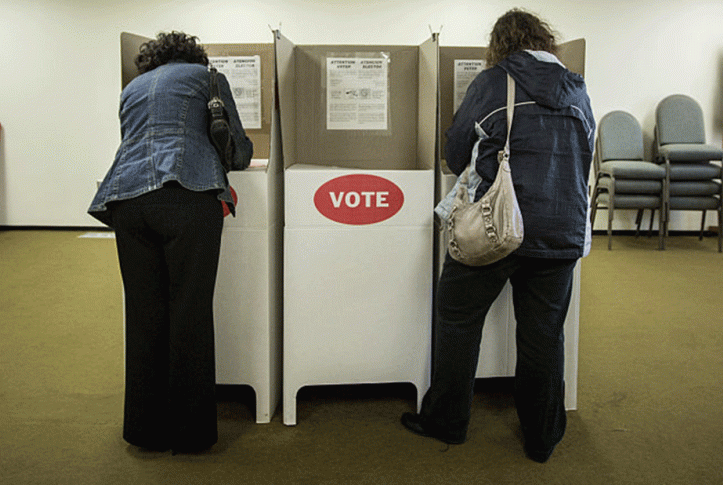Last week, Oklahoma joined 36 states and D.C. in expanding Medicaid eligibility to people earning up to 138 percent of the federal poverty level — about $17,000 annually. Oklahoma is the fifth state to use a ballot measure — voted on by state residents — to expand eligibility for Medicaid; 200,000 residents are expected to gain coverage. Missouri residents also will weigh in on whether to adopt Medicaid expansion in August.
Oklahoma and Missouri have learned lessons from three conservative states — Idaho, Nebraska, and Utah — that used ballot initiatives to expand Medicaid in 2018. In these states, a combination of legislative and executive branch actions, along with the Medicaid waiver process, have delayed newly eligible people from enrolling in coverage.
Expanding Medicaid is not as simple as flipping a switch. States must make administrative adjustments to enroll the newly eligible and submit a state plan amendment to the Centers for Medicare and Medicaid Services (CMS) to add the expansion group. CMS generally approves these changes quickly. States also can submit 1115 waivers for demonstration projects that allow some flexibility in administering the program. This process requires multiple public comment periods and CMS approval typically takes much longer.
How Ballot Initiatives Have Been Adopted, and What Oklahoma Did Differently
Despite ballot initiatives being adopted more than 18 months ago in Idaho, Nebraska, and Utah, some eligible residents in these states are still not covered. Idaho did not begin enrolling people in the new expansion group until November 2019, with coverage starting January 1, 2020. Nebraska submitted its required state plan amendment to CMS to expand eligibility in April 2019, but coverage is not scheduled to begin until October 1, 2020. Nebraska also submitted an 1115 waiver for a tiered benefit structure and is hoping to receive federal approval before implementing expansion.
In Utah, after voters approved a full expansion, legislators passed a bill to replace it with an alternate plan that would cap federal funding for the new coverage group. While the alternate expansion plan was under consideration, the state began covering people with incomes up to the poverty level, about $12,500 for an individual, in April 2019. This partial expansion required the state to pay a larger share of the cost than they would under full expansion (32% vs. 10%) and left out about 60,000 people earning 100 percent to 138 percent of the poverty level. In late December 2019, Utah implemented the full Medicaid expansion with a work requirement for beneficiaries — sometimes referred to as a community engagement requirement. The work requirement has been suspended because of COVID-19.
To avoid these issues, the Oklahoma and Missouri ballot measures amend the state constitution. Previous ballot measures changed state law, and were easily altered by legislative and executive branch actions. By placing Medicaid expansion within the state constitution, there is a much higher barrier to making changes. The Oklahoma measure specifies that a state plan amendment must be submitted within 90 days of passage. In addition, no additional restrictions can be placed on eligibility or enrollment for the expansion group than are applied to traditional Medicaid eligibility groups. The measure in Missouri has similar language and would require coverage for newly eligible individuals to begin by July 1, 2021.
Will Other States Pursue Medicaid Ballot Initiatives?
Ballot initiatives to expand Medicaid have largely succeeded because of wide support from the public and the recognition that it’s a good deal for states because the federal government picks up 90 percent of the cost. A recent analysis finds the net cost of expansion for states is often less than the 10 percent they are required to cover because of savings generated in other budget areas. But pursuing expansion by ballot measure is not without challenges. Of 13 states that have yet to expand, eight do not allow voter initiatives or popular referenda. Another state that does allow ballot measures — Florida — adopted legislation making it more complicated and expensive to collect signatures, despite already having one of the highest thresholds for approval of ballot initiatives.
There are also political challenges. States often pursue the ballot process when the legislative makeup and gubernatorial leadership do not support expansion. As demonstrated in Idaho, Nebraska, and Utah, a reluctant legislature or executive branch may not act quickly or effectively to allocate funds and implement a program they oppose. Oklahoma may have avoided some of these pitfalls by amending the state constitution; however, the state legislature still needs to allocate funding for the state’s share of expansion costs.
One thing is clear: policy change is best advanced and sustained when there is widespread support for health reforms among stakeholders, policymakers, and the public. While ballot initiatives are an important vehicle for advancing policy change, the road from passage to implementation can be long, winding, and challenging.




